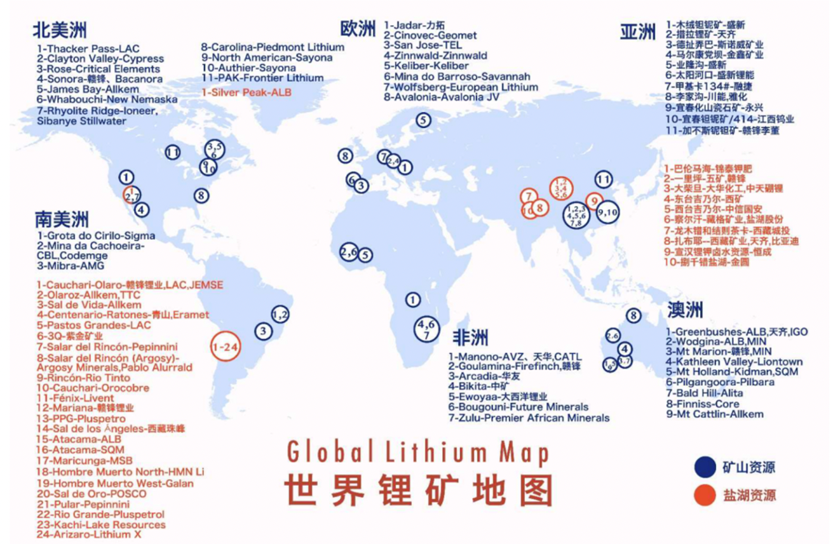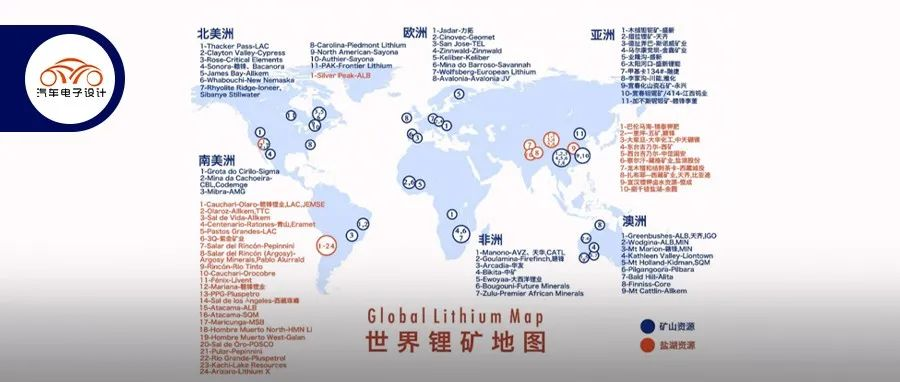Author: Zhu Yulong
At the World New Energy Congress, Chen Hong, Chairman of SAIC Group said that “in the field of electrification, solid-state batteries will gradually be deployed, and cooperation with Sinopec, PetroChina, and CATL will be conducted to jointly develop battery swapping businesses” So, what kind of company is “Shanghai Jienen Zhidian New Energy Technology Co., Ltd.” who quietly set sail at the end of September with multiple party collaboration?

From the perspective of industrial and commercial registration, the registered capital of this company is 4 billion, which is more than double the registered capital of Wuhan Techvolt Battery Asset Co., Ltd, the battery asset company of NIO, which was 1.8 billion.
Our biggest question is, why would China’s two oil giants and SAIC Group, along with CATL come together to establish such a company? What can the combination of car companies, Ning Wang and China’s two largest oil companies do in terms of battery assets?
In my understanding, this is a state team collaboration where cars are separated from their electrical system, combining China’s largest automotive group, largest battery company, and largest traditional energy enterprises.
-Sinopec and PetroChina: Undoubtedly, the division of labor is very clear in traditional cars and fuel providers. In the era of electric vehicles, will they rely on car companies to build and supplement energy infrastructure while the two largest energy suppliers wait idly? We can see that these two have already been trying to answer this question by exploring car-electrical separation and comprehensive energy supplementation systems.
-SAIC Group: It has always been said that SAIC takes the lead in new energy vehicles, and this time it tries to make an attempt from the independent, group to societal level, focusing on standardized batteries and car-electrical separation.
-CATL: China is also the world’s largest power battery company, and it’s exploring different models for laying out and supporting in this field.
The collaboration of these few is of great significance.
Three Bases:Battery Assets, Car-Electrical Separation, and Battery Swapping
In 2022, affected by both the surge in demand and the pandemic, the safety and stability of the electric vehicle industry chain and supply chain are facing severe challenges, especially the sharp rise in the price of upstream raw materials for batteries is even more worrying. In about a year, the price of lithium carbonate has risen tenfold, and downstream companies such as complete vehicle manufacturers are all working for mining masters upstream, bearing huge cost pressures. This situation seriously interferes with the further development of the new energy vehicle industry.
Just recently, a picture released by CATL during its battery swapping service process was very impressive. It shows that in 2022, CATL has seen that the scale of the power battery market has expanded, which leads to the rising trend of battery cost curve.In the context of China’s lack of lithium resources, how can China’s new energy vehicles break through? It’s worth noting that we’ve just reached 10 million new energy vehicles this year, with 20% of them being plug-in hybrids with small batteries. There are still 400 million motor vehicles in China, and electrification is on the rise in all industries, leading to a very high demand for lithium resources.
One approach is to tackle the cost and technology of batteries, which many enterprises are currently doing, with some even striving to make their own batteries. The other approach is to manage the power battery as an independent asset, which usually accounts for roughly 50% of the cost of an electric vehicle, and the battery’s condition determines the performance indicators, such as range and safety, of the electric vehicle. These properties make it more valuable than the general auto parts.
As batteries have a lifespan, their performance gradually deteriorates, which means that both car owners and automakers should manage and dispose of power batteries more properly. Separating the battery from the vehicle can not only reduce the threshold for car owners to purchase, minimizing losses due to the mismatched performance degradation cycle between the vehicle and the battery but also better realize the performance and recovery of the power battery and promote the development of the entire electric vehicle industry.
In fact, in an interview with Zhu Jun, the leader of SAIC-GM-Wuling, he also supports battery separation and battery banks. The battery bank can fully tap the value of the battery, greatly reducing the initial purchase cost for consumers, and bringing great benefits to the safety management of the battery.
In battery data management, because the power battery is applied in real-time to the swap station and electric vehicle, it needs to be digitized, its characteristics detected and collected through cloud monitoring, and used to its fullest potential through innovative business models.
Regarding the role of China National Petroleum Corporation and China Petroleum & Chemical Corporation:
1) What are the implications of transitioning from selling oil to consumers to providing leasing products centered on battery assets?The company JNEV Intelligent Technology has two important shareholders, Sinopec and PetroChina, both of which are traditional energy suppliers who are not willing to fall behind in the new energy era. They have been expanding their supplementary energy networks, such as battery swapping stations. Previously, they established battery swapping stations through partnerships with companies such as ODRIVE and NIO.
In 2021, Sinopec proposed the goal of building 5,000 battery swapping stations to officially enter the battery swapping service field. By December 2021, Sinopec has cooperated with companies such as NIO, ODRIVE, and Geely to establish 65 battery swapping stations and strengthen research and development to promote the implementation of universal battery swapping stations.
China Petroleum is following its three-step overall deployment of “clean substitution, strategic replacement, green transformation”, accelerating the construction of a low-carbon energy ecosystem that combines fossil energy and clean energy, continuously promoting the expansion and upgrading of charging and swapping businesses. Currently, they have constructed and put into operation a total of 203 charging and swapping stations in more than 20 provinces and regions, including Sichuan, Guizhou, Beijing, Hainan, Heilongjiang, and Guangxi.
As for the advantages, we can objectively see that:
-
Both state-owned enterprises have more land resource advantages and can undertake the transformation from gas stations to supplementary energy facilities;
-
In the petroleum industry, companies invest more in the front-end, while the key link around new energy vehicles is the battery.
2) Equal use of urban mines and batteries
Looking at the global battery resources, China’s lithium resources are relatively small compared to the world. Global lithium resources are mainly concentrated in Chile and Australia, with China accounting for only 7%. Currently, with the growth of China’s power battery demand, it has also stimulated the development of the domestic lithium salt processing industry, resulting in China’s dependence on foreign lithium resources reaching 70%, mainly sourced from Australia.
Domestic lithium resources are mainly distributed in the form of salt lake brine, accounting for nearly 80% of the total resources. Currently, high-quality lithium mines are basically in the development stage. In terms of salt lakes, Chaharhan Salt Lake is owned by Salt Lake Group and Tibet Tianqi Lithium Industry Co., Ltd.; Xitate Jina’er Salt Lake is owned by CITIC Guoan Lithium Industry Co., Ltd. and Hengxin Rongke; Zhabuye Salt Lake is jointly held by Tibet Mining, BYD, and Tianqi Lithium. In terms of primary lithium mines, Lijia Gou belongs to ChuanNeng Power and Yuhua Group; Jiaomika No. 134 vein is controlled by Rongke Lithium Battery; Yelang Gou belongs to Shentun Lithium and Aba State-owned Assets Commission.
These resources need to be gradually realized and will not be able to catch up with the development of China’s power battery in the short term.
 “`
“`
China’s development relies on “urban mines” to extract lithium resources from them, and have technology for comprehensive recycling and utilization of cobalt, nickel, manganese, lithium and other metals in lithium-ion batteries. As precious metals such as lithium continue to rise in price internationally, the retirement and disposal of batteries is crucial.
In fact, the most important thing for battery asset companies is to guide their customers to retire and dispose of battery assets at the right time with the least cost by analyzing market conditions and battery safety, expected life, and remaining value. It is very valuable for two large central enterprises to enter and try this matter, as they have the ability to realize the capitalization of these batteries.
The Support from CATL
CATL released the battery-swapping service brand EVOGO in early 2022, providing a comprehensive solution through the combination of “swapping blocks, fast-swapping stations, and APP,” which covers the passenger car market from A00 level to C level, and solves three major pain points of consumers: mileage anxiety, energy supplement anxiety, and purchasing cost. Power batteries are the key to battery asset management and separation of vehicle and battery values. As the industry leader in the field of power batteries, CATL has product and technical advantages, which is the source of its confidence in investing in the new business model of battery-swapping.
In a sense, the battery-swapping system is the key link connecting the production and recycling of power batteries. CATL will form a closed loop business that includes research and development, production, use, and recycling, and ultimately achieve full life cycle management.
However, this involves the issue of how to cooperate. In this company, we can see that CATL, as the leader in the power battery industry, is also working with SAIC Group, striving to promote the unification of power battery specifications and the promotion of battery bank models.
The Role of SAIC
Starting from Shanghai, SAIC provides all-round services for enterprises across the country that can charge and swap batteries.
Here, we also have SAIC, which has been working on the promotion of platform-based power batteries for many years. The goal is to promote shared battery packs that can be used by both low-end and high-end vehicles, and to launch batteries with unified specifications and different thicknesses to support energy requirements above 50-130 degrees. From the perspective of technical capacity configuration, this span is very large.
Moreover, by supporting fast-swapping technology, platform-based battery packs for auto manufacturers can be promoted from SAIC to vehicles at different levels, which is a very meaningful attempt.
“`
Summary: In my understanding, Je Energy Intelligence is valuable to all aforementioned shareholders. In a sense, with a registered capital of 4 billion, this company pioneers a collaboration between energy service providers, battery enterprises, and car manufacturers, which serves as a model for China’s next step towards electrification. Through it, we can see whether this unified model has greater potential and can be extended nationwide, ultimately providing a solution for the development of China’s new energy vehicles.
This article is a translation by ChatGPT of a Chinese report from 42HOW. If you have any questions about it, please email bd@42how.com.
